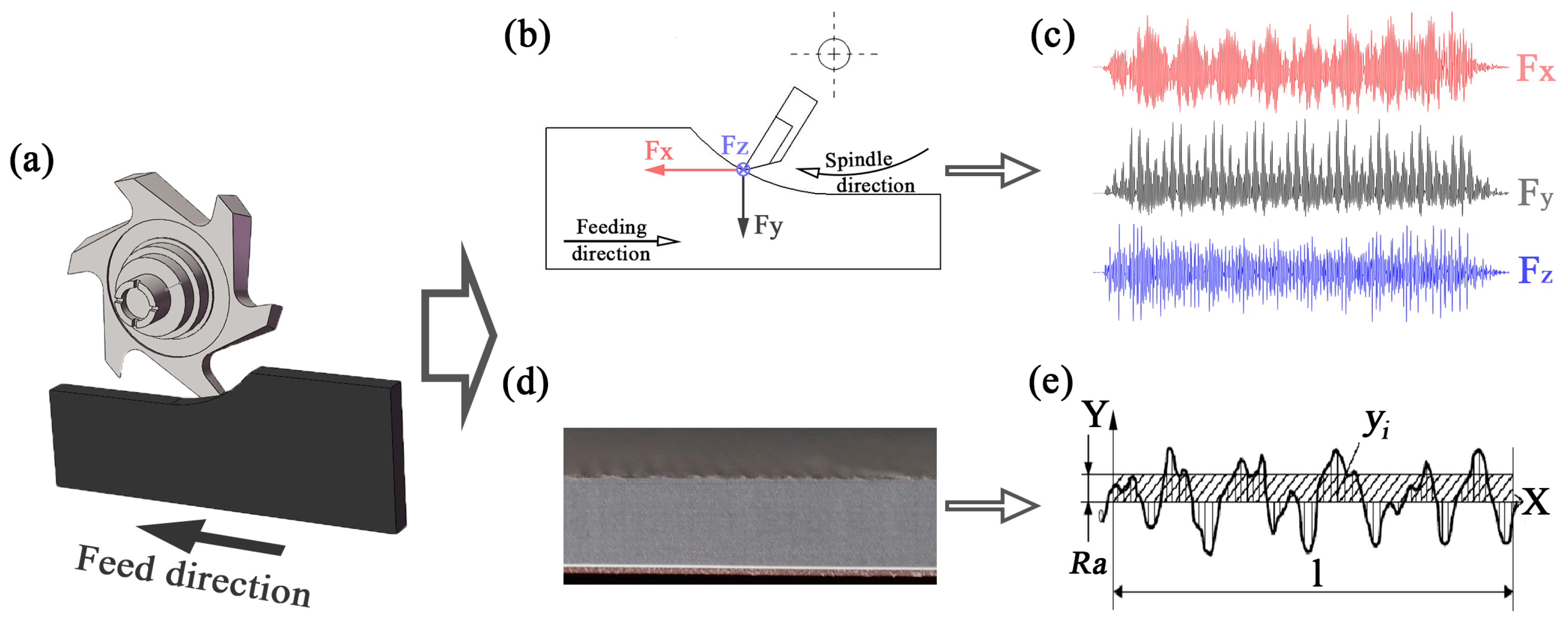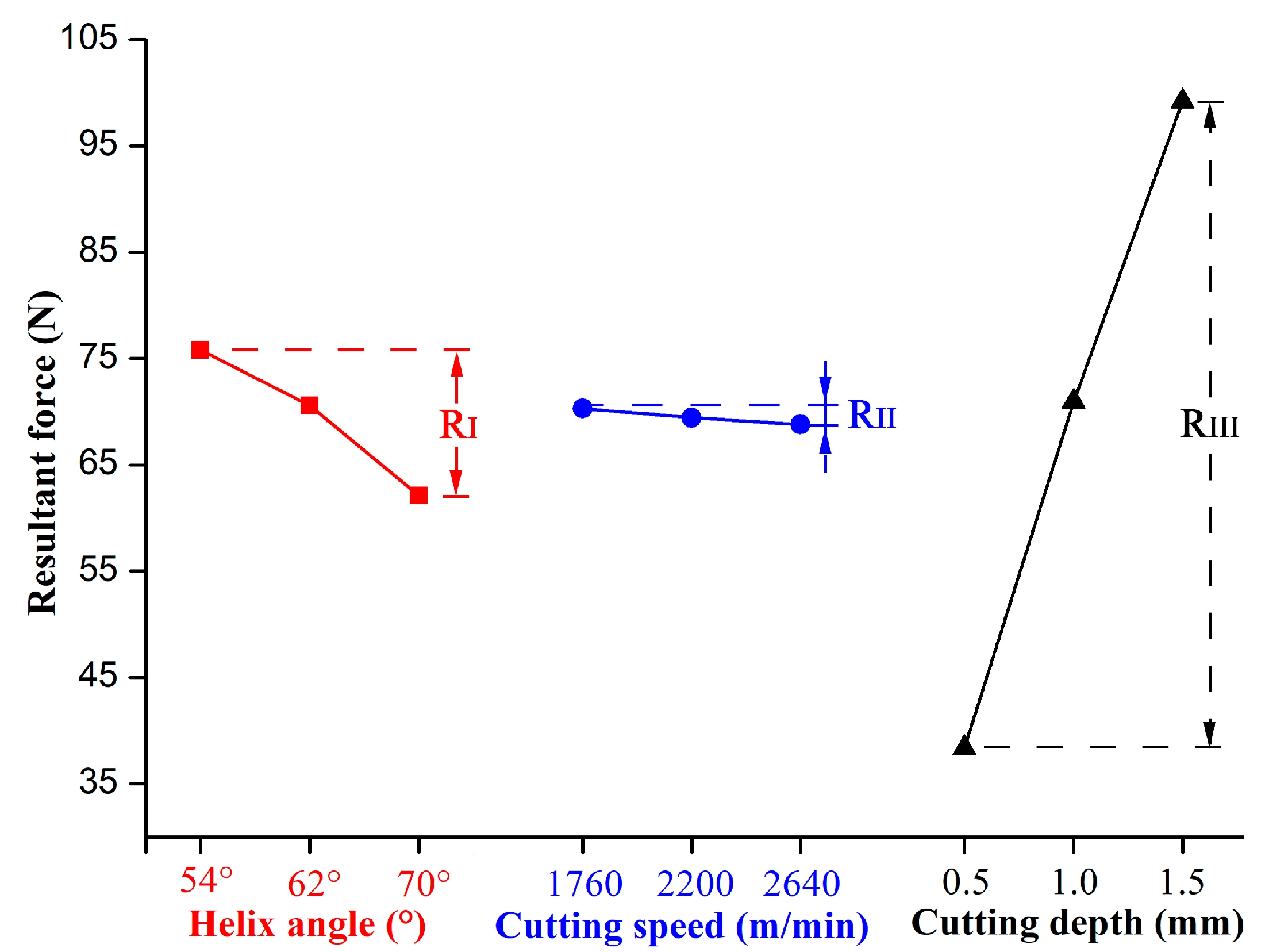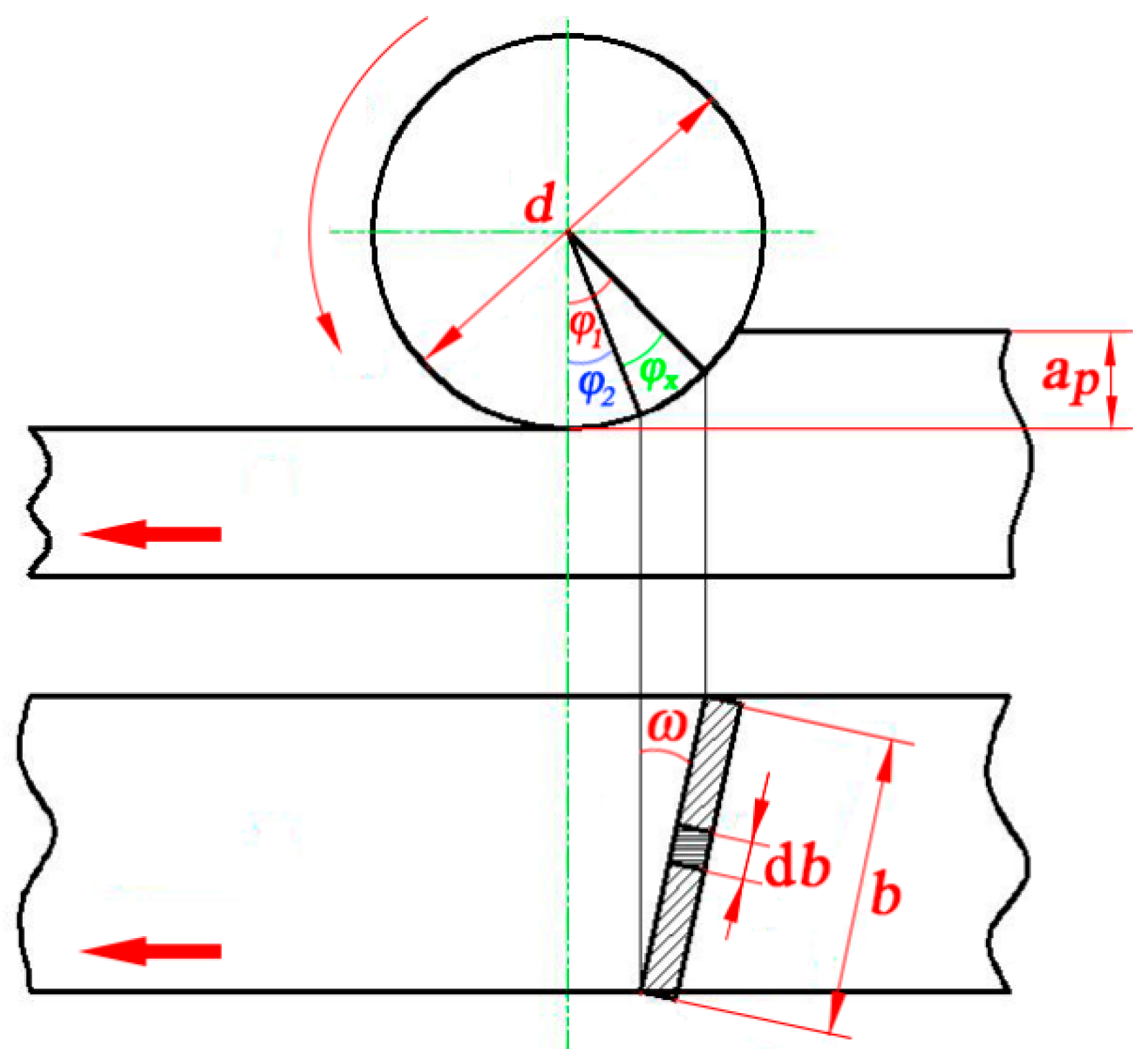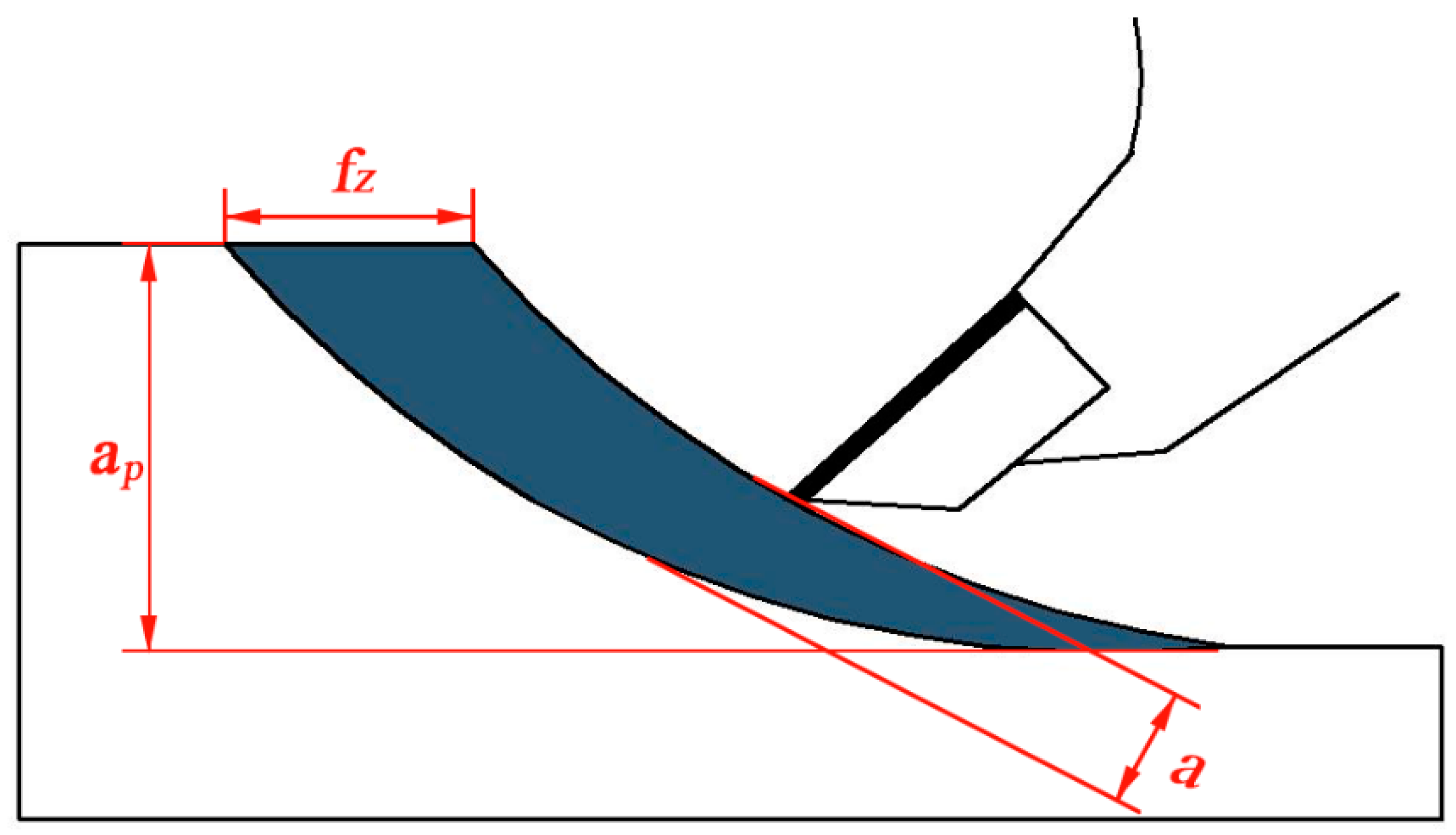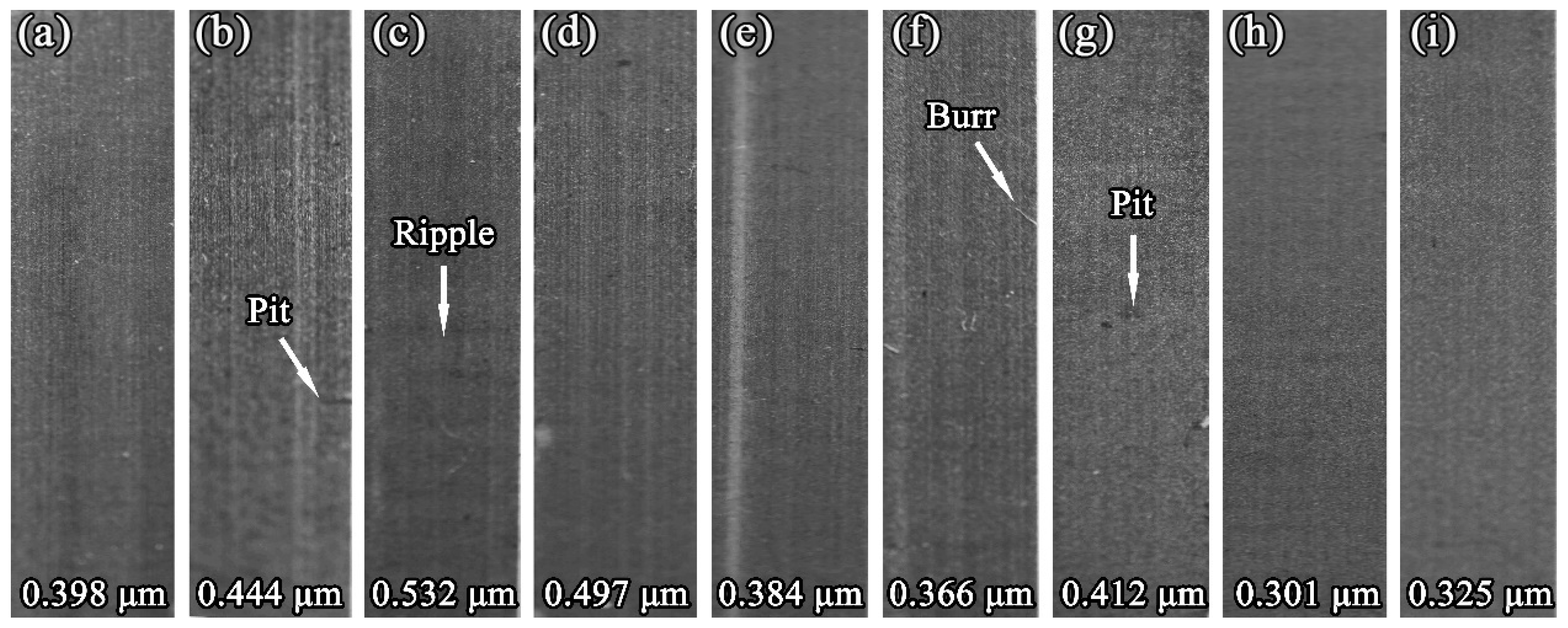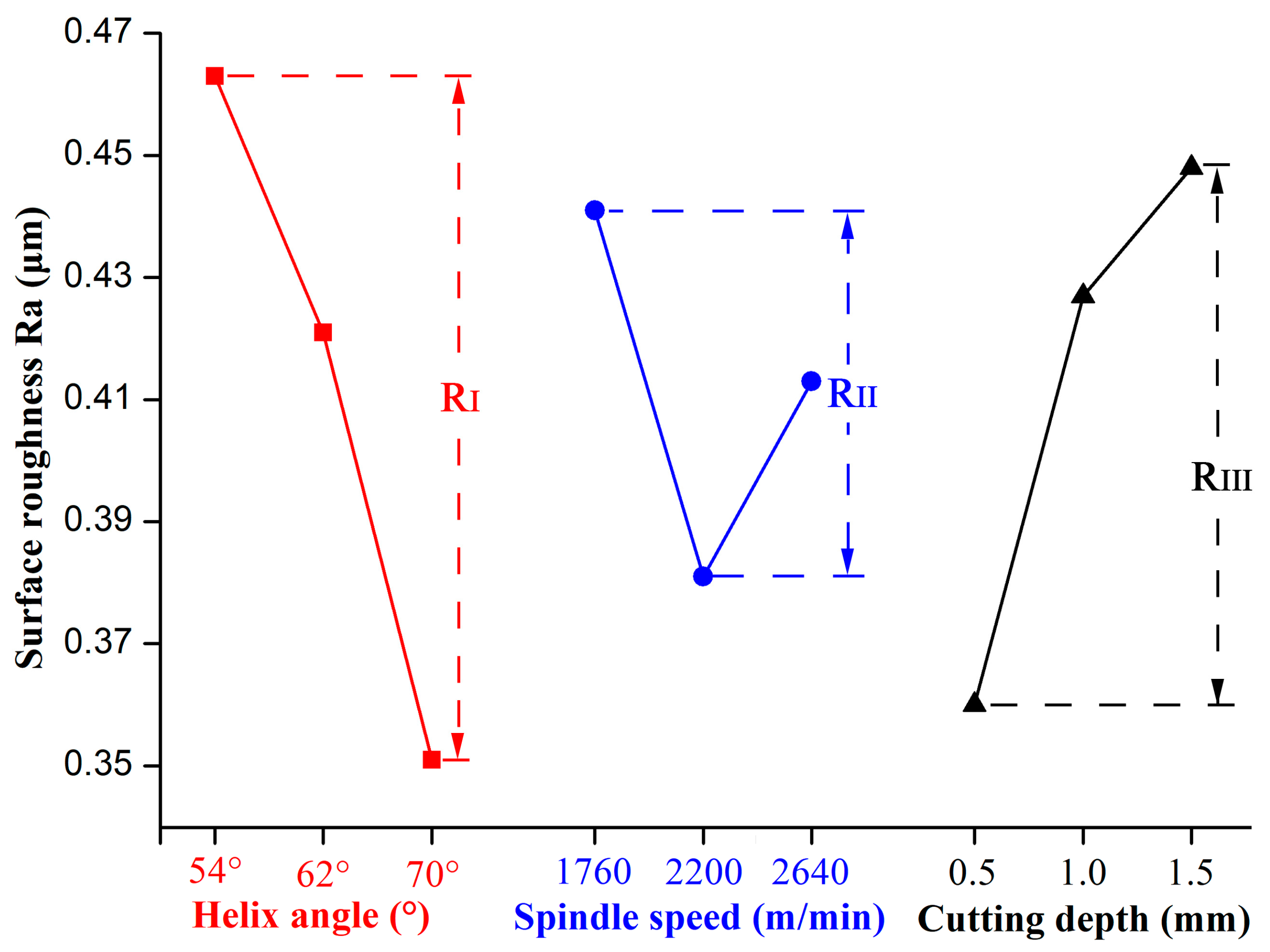1. Introduction
Luxury vinyl tile (LVT), as a new engineering material, has been extensively used in flooring and wall decoration, because of its environmental protection, ultra-wear-resistance, and its being waterproof [
1]. LVT is mainly made from the mixture of calcium carbonate, polyvinyl chloride and other auxiliary materials, then formed into panels by applying pressures, 4–17 MPa, and temperatures, 150–170 °C, in a hot press. Finally, the wear layer and colorful printing layer are directly laminated to the panels by heating in the calendaring process [
2,
3].
Compared with the traditional engineering materials used in flooring, LVT is a hard-to-cut material. The calcium carbonate contained in LVT has high hardness, causing tool wear, and leading to shorter service life of cutting tools. Diamond cutting tools have been extensively used to improve production efficiency [
4], due to their superior properties, such as high hardness [
5], low friction coefficient [
6], high elastic modulus [
7] and low thermal expansion coefficient [
8].
In the literature, the main research subjects during different materials processing have always been the cutting force and roughness of the machined surface, which directly affect the energy consumption of the machine [
9], tool design [
10], and smoothness of the machined surface [
11]. Meanwhile, the cutting force and the surface roughness are sensitive to the cutting parameters, tool geometries and so on, as shown by the following references. Pramanik et al. [
12] studied the changes in cutting force and surface roughness when turning electroless-nickel plated die with a diamond cutting tool, wherein they determined that the cutting forces show an increasing trend with the increased spindle speed, feeding rate and cutting depth, while the contribution of cutting depth to surface roughness is insignificant, and the surface roughness first decreases and then increases with the increasing spindle speed. In related studies, Cao et al. [
13] and Zhu et al. [
14,
15], investigated the machinability of the stone-plastic materials, a composite similar to LVT, and their results showed that the cutting forces and surface roughness show a similar trend under different cutting forces, where they all are positively correlated with cutting depth, but negatively related to cutting speed and rake angles of cutters. Taking cutting force and surface roughness as evaluating indicators, the cutting parameters were optimized by Yalcin et al. [
16], wherein milling steel, and the optimum selection of cutting parameters importantly contributed to the improvement of the economic benefit and productivity [
17].
LVT is a difficult to machine material due to its special material composition, according to previous research [
18]. The calcium carbonate contained in the LVT has high hardness, which leads to a lower cutting stability and severe tool wear, and this directly affects the cutting quality of the machined surface. Helical milling is one of the most popular cutting methods, where the cutting edge attached to the rotating axis traverses a helical trajectory and forms a cylindrical surface [
19]. Compared with the common straight-tooth cylindrical milling, helical milling is recommended for improvement of machining efficiency, cutting quality and stability, and to reduce cutting abrasion [
20,
21,
22]. Although helical milling has a wide application field for processing various materials [
23], it is rarely used in LVT machining. Meanwhile, for LVT as a new engineering material, there is still no report that focuses on its machinability during helical milling. How to scientifically select the optimal cutting parameters and tool geometries has been an urgent problem for LVT enterprises.
In this study, a series of helical milling experiments were carried out, mainly describing the changes in cutting force and roughness of machined surface in terms of tool geometries and cutting parameters. Based on the results of this analysis, the optimal cutting conditions in terms of cutting quality, energy consumption and productivity were determined, which aims to provide guidance for helical milling adopted in LVT machining.
2. Materials and Methods
As shown in
Figure 1a, up milling was conducted in a commercial computerized numerical control (CNC) machining center (MGK01, Nanxing Machinery Co., Ltd., Guangzhou, China) under dry conditions with a constant feed rate of 15 m/min, in which the LVT (
Table 1) was milled by helical diamond cutting tools (
Table 2). As shown in
Figure 1a–c, the cutting forces generated in helical milling, namely
Fx,
Fy and
Fz, were acquired by a three component piezo-electric dynamometer (9257B, Kistler Group, Winterthur, Switzerland) allowing measurements from −5.0 to 5.0 kN, and a charge amplifier (Kistler 5070A) with a rate of 7100 samples per second. Finally, the dynamic cutting forces were processed and analyzed by DynoWare software (Version 2.6.5.16, Kistler Group). To better understand the changes in cutting force, the resultant force was considered and calculated as shown in Equation (1):
where
FR was defined as the resultant force,
Fx,
Fy and
Fz were the component forces parallel to the feeding direction, perpendicular to the feeding direction, and parallel to the direction of the cutter axis, respectively.
As displayed in
Figure 1d,e, surface roughness,
Ra was taken as the evaluation index for the smoothness of the machined surface, which was measured by using a surface profiler (S-NEX001SD-12, Tokyo Seimitsu Co., Ltd., Tokyo, Japan), and calculated by the software ACCTee. Meanwhile, a scanning electron microscope (SEM) (Quanta 200, FEI Co., Ltd., Hillsboro, OR, USA) was used to observe the machined surface of LVT.
As given in
Table 3, three factors, including helix angle, cutting speed and cutting depth were identified, and the range of each factor for the study was determined from the LVT industrial processing. In this work, Taguchi methods were used, which is a kind of design method with multiple factors and multiple levels, based on the orthogonality selected from a comprehensive test of some representative points test [
24,
25]. The cutting force and surface roughness were measured 3 times in each combination of cutting parameters according to the orthogonal Latin square design table L
9 (3
4) [
26], and the average values were obtained.
